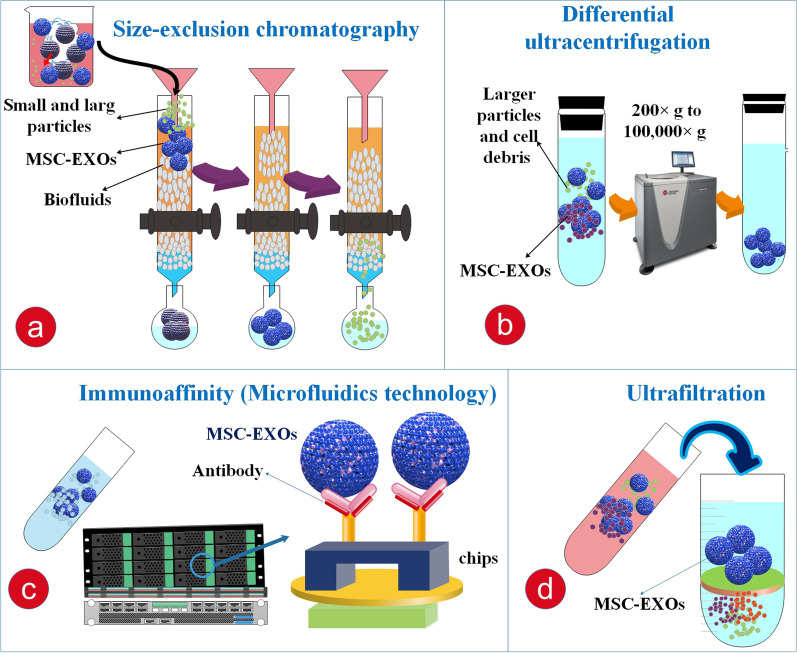Fig. 6.
Traditional and new techniques of EXO purification. EXOs are classified into three main kinds associated with their location of source, density, expression of markers, and dimensions. Traditional techniques of EXO separation contain differential ultracentrifugation and size-exclusion chromatography. a Size-exclusion chromatography utilizes biofluids as a mobile state versus a porous static state to differentially elute molecules with a reverse speed relative to their dimension. b Differential ultracentrifugation depends on the isolation of EXO subpopulations through progressively higher speed rates. Polyethylene glycol (PEG)-based sedimentation uses a solution to ease a polymer-encapsulated vesicle collection in large amounts. c Immunoaffinity absorption utilizes antibodies targeted versus exosomal surface proteins to separate particular vesicle populations. The microfluidics (MF) method utilizes chips with particular antibody-interceded connections to capture EXOs effectively. d Ultrafiltration is associated with a filter of a particular pore size that forms a vesicle-rich filtrate particular to the favorable dimensions [164, 165]

